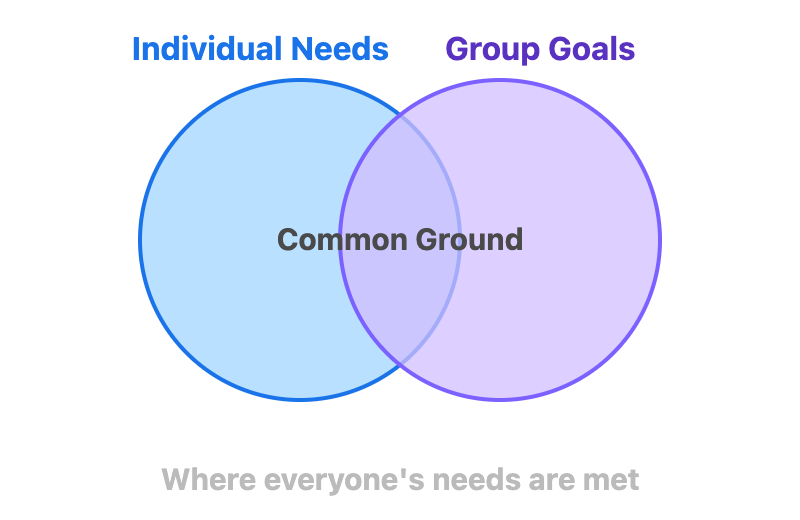When people argue, it’s often about more than just the topic on the surface. Maybe two people are disagreeing about plans or chores, but what’s really bothering them is feeling left out or worried about changes. Sometimes, a debate about who gets what is really about wanting to be treated fairly. Figuring out what’s really going on underneath the argument is the key to solving it for good.
There are three main types of root causes:
- Emotional issues: These show up when someone reacts strongly to something small. For example, if a person gets very upset about a minor schedule change, it might be because they feel ignored or stressed out. Listen for words like, “This always happens,” or, “Nobody cares about our work.” These are clues that feelings are hurt or needs aren’t being met.
- Relational issues: Sometimes, the real problem is between people, not the task. Maybe there’s old tension, broken trust, or just a pattern of not getting along. You might hear things like, “I can’t work with them,” or, “After what happened last time…” These issues usually need some rebuilding of trust before things can get better.
- Systemic issues: These are problems with how the team or company is set up. Maybe roles aren’t clear, or the way work is divided feels unfair. People might say, “The system is set up to fail,” or, “We’re always fighting the same battle.” If the same kind of argument keeps happening with different people, it’s probably a bigger, system-wide problem.
Here’s an example:
- Dan: I always end up doing the dishes, even when it’s not my turn.
- Jessica: That’s because you never help out when you’re supposed to.
- Victoria: How long has this been going on?
- Dan: Ever since we changed the chore schedule a few months ago.
- Jessica: And now there’s more to do, but we never talked about how to split it up.
This shows the real problem isn’t just about dishes—it’s about feeling overwhelmed and not having a fair way to share responsibilities after things changed. When people talk about what’s really bothering them, it’s easier to find a solution that works for everyone.
Probing questions help you move past surface-level answers and get to the real reasons behind someone’s feelings or actions. While surface questions usually get short or simple responses, probing questions encourage people to share more about what’s really going on for them—like their worries, hopes, or what they truly need. When you use probing questions, you’re more likely to discover solutions that work for everyone, not just quick fixes.
Probing questions invite people to tell their story and explain their experience, instead of just giving a yes or no answer. For example, instead of asking, “Are you happy with the process?” you could ask, “Can you walk me through what works and what’s hard about the process?” This helps people open up and share more details.
Here are some examples of how to turn a surface question into a probing question:
Sometimes, people don’t even realize what’s really bothering them until they have a chance to talk it out. By asking these kinds of questions, you help everyone get to the heart of the issue.
Once the real issues are out in the open, it helps to connect them to what everyone wants. Most people want things to go smoothly, for everyone to feel respected, or for the everybody to be happier together. If two people are arguing about how to do something, but both care about fairness or making things easier for everyone, that’s a shared goal. Pointing this out can help them work together instead of against each other.

For example, if someone needs more time to do their part, you can say, “Giving Adil more time helps make sure everything gets done well.” Or if someone wants more flexibility, you might say, “Being flexible helps everyone feel less stressed.” This way, meeting one person’s need can help both parties.
You can also ask questions like:
- “How would fixing this help things go better for everyone?”
- “What would be possible if we solved this problem?”
- “How does this affect the rest of the group?”
By connecting personal needs to team goals, people are more likely to work together and find solutions that last. This turns conflict into a chance to make the team stronger for everyone.
Understanding what’s really behind a conflict, asking good probing questions, and connecting people’s needs to shared goals can make disagreements much easier to solve. When everyone feels heard and can see how their needs fit with the bigger picture, it’s easier to find solutions that work for everyone—not just a quick fix. Next, you’ll get a chance to practice these skills. You’ll look at a real-life scenario, try asking probing questions, and see how connecting individual concerns to group goals can help resolve the conflict. This practice will help you feel more confident the next time you need to help others work through a disagreement.
